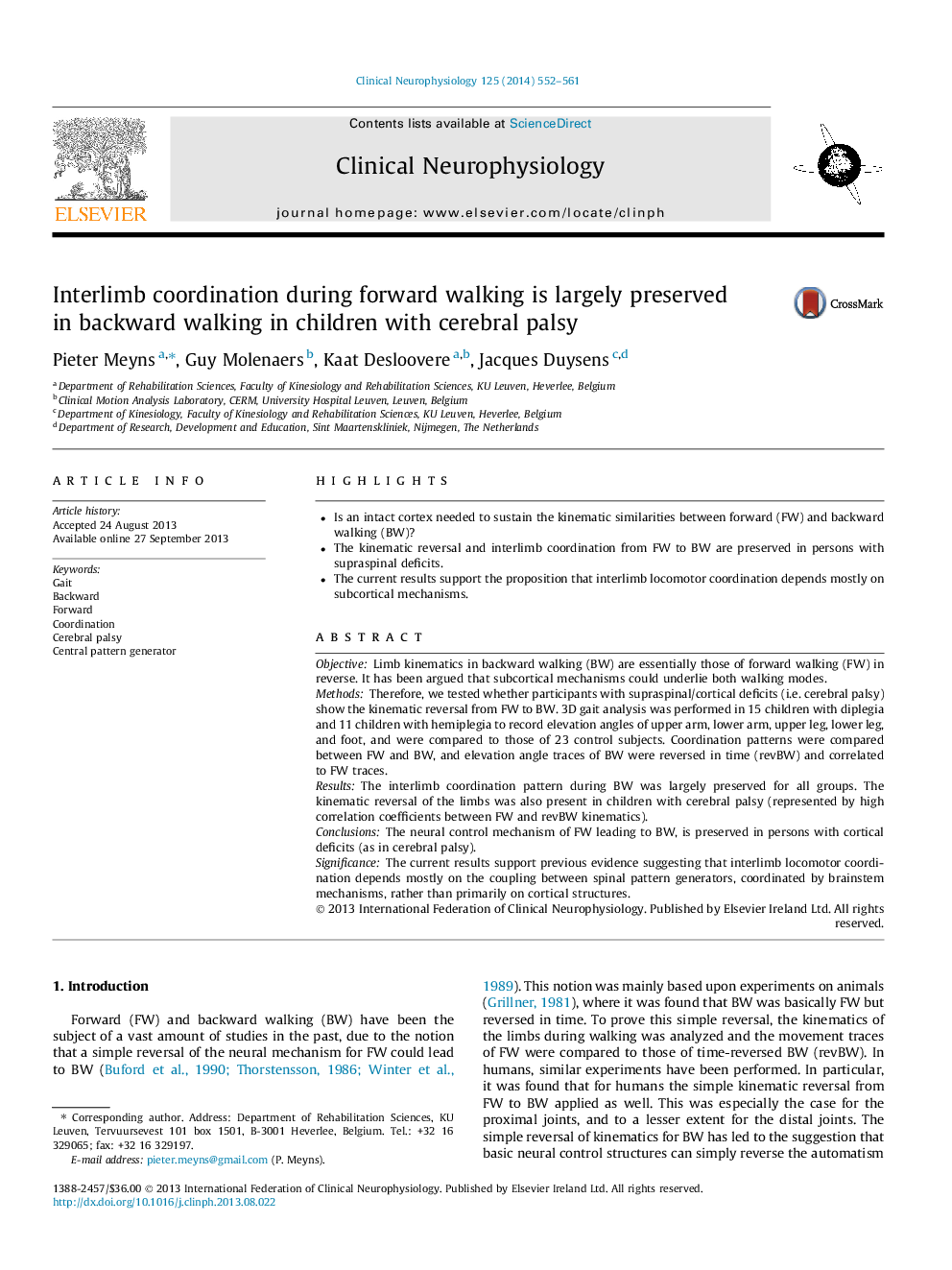| Article ID | Journal | Published Year | Pages | File Type |
|---|---|---|---|---|
| 3043945 | Clinical Neurophysiology | 2014 | 10 Pages |
•Is an intact cortex needed to sustain the kinematic similarities between forward (FW) and backward walking (BW)?•The kinematic reversal and interlimb coordination from FW to BW are preserved in persons with supraspinal deficits.•The current results support the proposition that interlimb locomotor coordination depends mostly on subcortical mechanisms.
ObjectiveLimb kinematics in backward walking (BW) are essentially those of forward walking (FW) in reverse. It has been argued that subcortical mechanisms could underlie both walking modes.MethodsTherefore, we tested whether participants with supraspinal/cortical deficits (i.e. cerebral palsy) show the kinematic reversal from FW to BW. 3D gait analysis was performed in 15 children with diplegia and 11 children with hemiplegia to record elevation angles of upper arm, lower arm, upper leg, lower leg, and foot, and were compared to those of 23 control subjects. Coordination patterns were compared between FW and BW, and elevation angle traces of BW were reversed in time (revBW) and correlated to FW traces.ResultsThe interlimb coordination pattern during BW was largely preserved for all groups. The kinematic reversal of the limbs was also present in children with cerebral palsy (represented by high correlation coefficients between FW and revBW kinematics).ConclusionsThe neural control mechanism of FW leading to BW, is preserved in persons with cortical deficits (as in cerebral palsy).SignificanceThe current results support previous evidence suggesting that interlimb locomotor coordination depends mostly on the coupling between spinal pattern generators, coordinated by brainstem mechanisms, rather than primarily on cortical structures.
